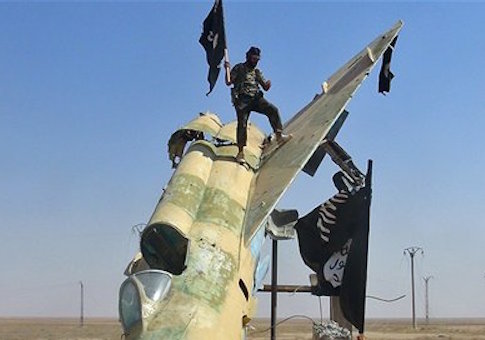Pentagon officials are uncertain as to whether they have the authority to direct U.S. troops to protect the Syrian insurgents who will help create and eventually protect the so-called Islamic State "safe zone" on the Syrian-Turkish border.
Last week, the United States and Turkey agreed to rid the roughly 60-mile-long border zone of Islamic State (IS, also known as ISIL or ISIS) terrorists, a plan that would result in heavy reliance on Syrian opposition fighters who are generally more concerned with crippling Bashar al-Assad’s regime than with toppling IS.
Defense One reported that, during a background call on the matter later in the week, three high-ranking Obama administration officials expressed uncertainty that U.S. troops would be allowed to protect the Syrian opposition fighters in the zone against Assad forces.
One official sidestepped an inquiry regarding the U.S. plan to make sure that its forces do not butt heads with the Assad regime.
"We’ve been at this now for some time," he said. "And from the first night of the strikes, we’ve been very clear through various channels to the Syrian government that we were going after [ISIS] and that they should not come into the area in which we’re operating. So I would assume that we’ll have a standard procedure."
When pressed on the matter, the Pentagon said that it does not yet have an answer as to whether the U.S. has the authority to engage Assad forces to protect Syrian insurgents if need be.
"We do not want to get ahead of the [Defense] Secretary in responding," explained Defense Department spokesman Lt. Col. Joe Sowers, citing Defense Secretary Ash Carter’s uncertainty on the matter earlier on in July.
"The U.S. is committed to the success of the personnel we will train," Sowers continued. "We are still considering the full complement of support we might provide to the [U.S.-trained] forces."
On the background call, the administration official dubbed the safe zone an effective "no-fly zone" but explained that details still need to be ironed out with Turkey.
"In terms of what exactly it looks like and how it will look and what the modalities are, that’s what we have to work out with them," the official said. "It will not be a no-fly zone just as Kobani was not a no-fly zone. But if there are significant operations going on in an area … We’ve learned an awful lot, so we’re fairly confident that we can figure out how to do this."
"Safe zone or whatever you want to call it, the idea is to get [ISIS] out of this area," added the official.
Though the U.S. insists that the plan is meant as a move against IS and not one against Assad, many Turkish and Syrian insurgents actually prioritize toppling Assad’s regime in Syria over scaling back IS.
Both view such a safe zone as an advantage over the Assad regime; it could allow them to curb the airstrikes launched by the Syrian government into regions occupied by the opposition while also shielding Turkey from the civil war.
It is unclear where the manpower for the mission will come from the Syrian opposition, as only 60 Syrian insurgents have received appropriate training and been vetted by the United States. Administration officials have not been specific about the number of fighters needed to generate the safe zone.
Regardless, the mission would require the United States military to work much more closely with the insurgents than it has thus far in the campaign against IS. The problem with relying on Syrian opposition fighters and ultimately allowing them to control the strip of land is, of course, that many of them have connections to Islamic militant groups.
